How To Properly Visit A Japanese Shrine
Traditional Etiquette
Avoid etiquette faux pas at Japanese shrines with this helpful guide!
Whether you’re visiting Japan for the first time or have been living here for some time, there are some things that take getting used to when it comes to Japanese traditional culture. One that comes up quite often is how to properly pay one’s respects at a Japanese Shinto shrine.
Shrines are open to the public and available for anyone, regardless of religious affiliation, to visit. They’re popular destinations for tourists and residents of Japan alike. Some are UNESCO World Heritage sites and others are known for their architecture or appearances in Japanese pop culture. Some visit them to collect goshuin (shrine stamps) others for their omamori (lucky talismans).
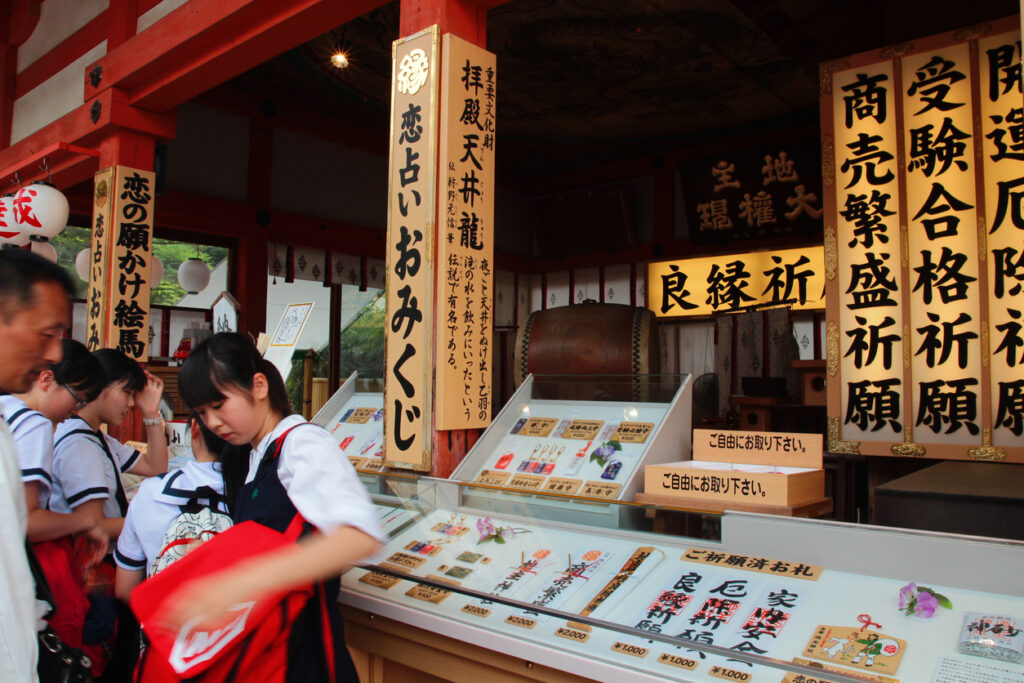 © Photo by iStock: Vincent-Ng
© Photo by iStock: Vincent-NgThere are countless reasons to visit a shrine, but the most important thing to remember is to be respectful of them. They are a religious site and, regardless of your personal beliefs, are sacred. If you intend to have the full shrine experience, then learning how to properly perform sanpai (参拝) is important.
Luckily the rules are very simple and almost identical regardless of where the shrine is located in Japan. Consider this your pocket guide to visiting a Japanese shrine, from the moment you arrive outside.
Step One: Bow at the Gate
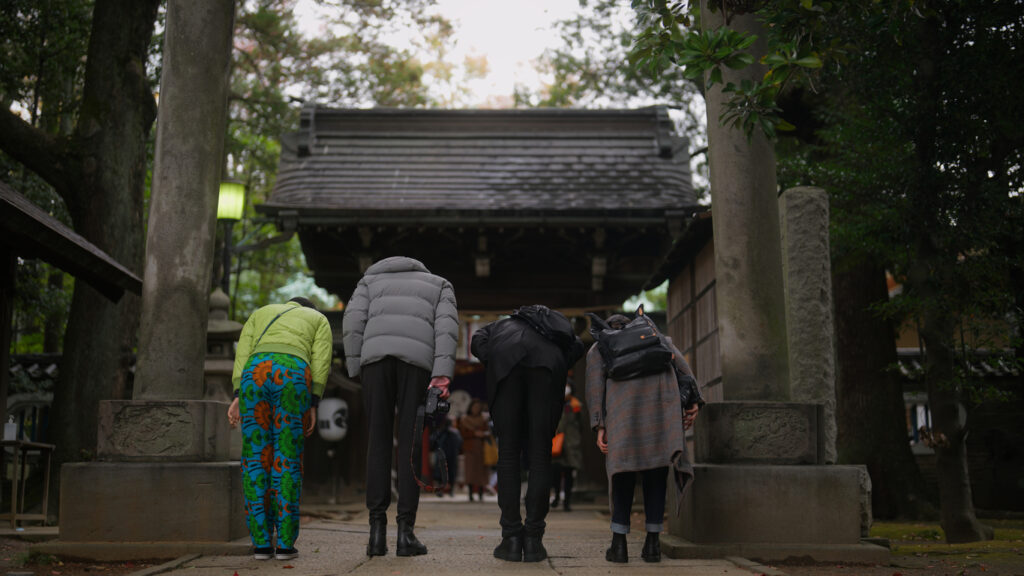 © Photo by iStock: recep-bg
© Photo by iStock: recep-bgAs you walk up the road or sando (参道) leading to the shrine, you’ll encounter the torii (鳥居). Made from stone, concrete or vermillion lacquered wood, these shrine gates demark the start of a shrine’s sacred space.
Stop outside this gate and bow once as deeply as you are comfortable doing. Some do a 45 degree angle bow, others a full bow at the waist. According to Shinto tradition, this is how you greet the guardian deities of the shrine and ask permission to enter the grounds.
The majority of people will follow the same rules as with sidewalks and escalators when entering a shrine: stick to the left as you enter. The secondary reason for this is that the center of the path under the torii is reserved for the deities of the shrine to walk along.
Step Two: Purifying Yourself
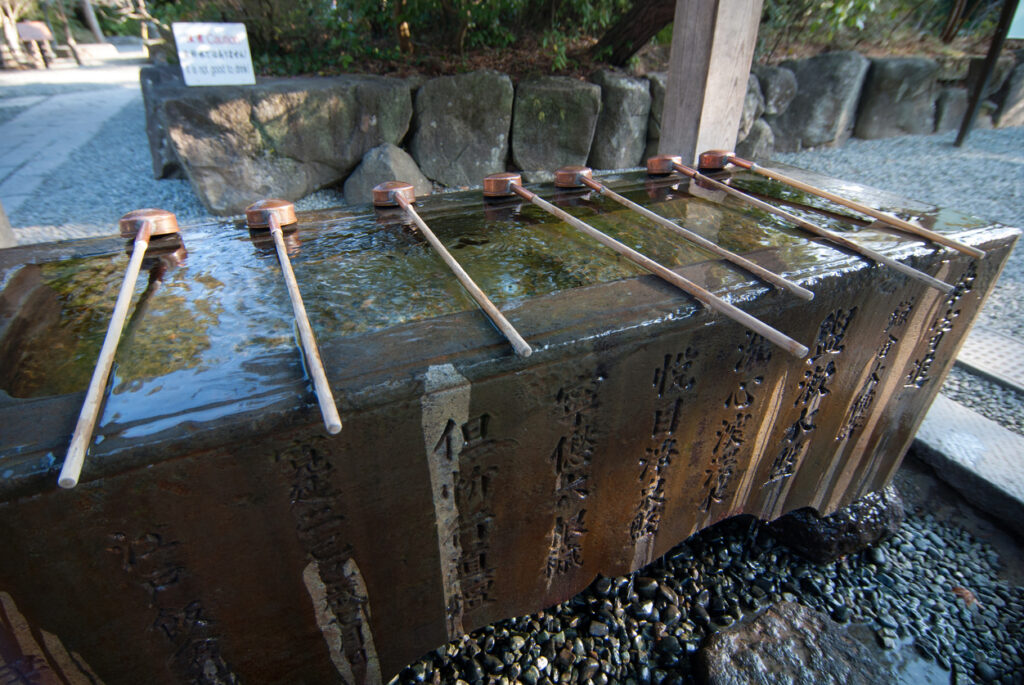 © Photo by iStock: benito_anu
© Photo by iStock: benito_anuAfter stepping through the gate, continue following the path toward the main building(s) of the shrine. Some shrine complexes are massive and will have a second torii gate, others have gardens or small tea huts and so on before reaching the main building or offices of the shrine itself.
As you move along, you’ll eventually come to a large, raised basin of water with a roof protecting it from the elements. This is the chouzuya (手水). Here is where you symbolically purify yourself before praying at the main shrine.
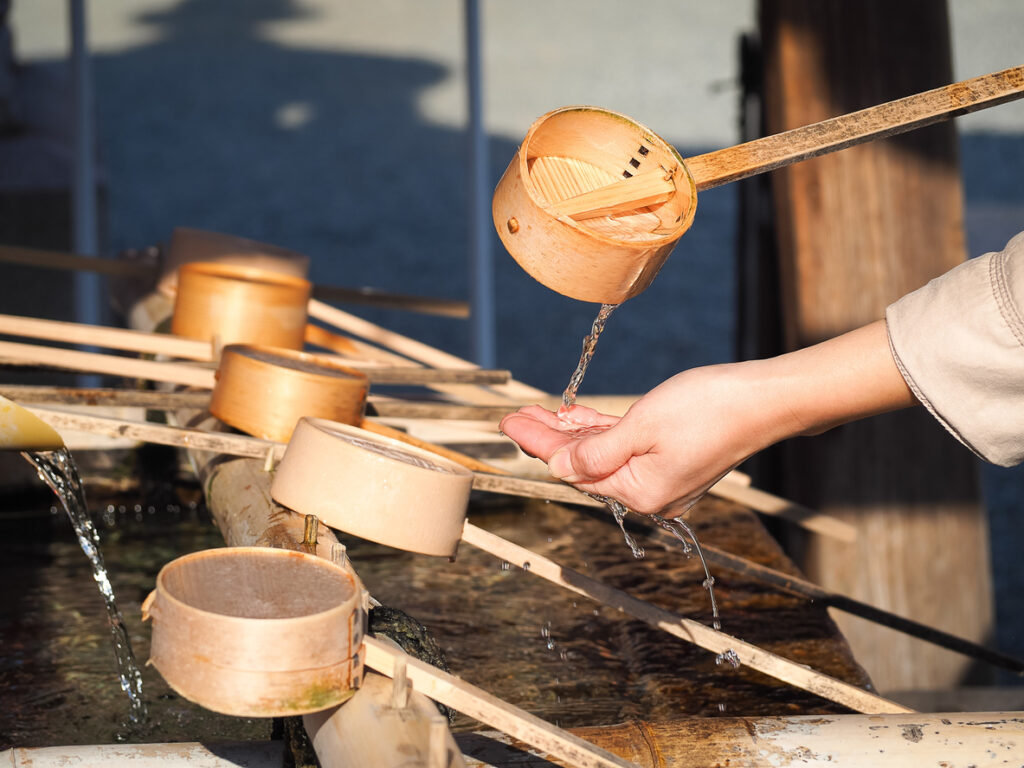 © Photo by iStock: VICHAILAO
© Photo by iStock: VICHAILAOOn or next to the chouzuya, you’ll find ladles known as hishaku (柄杓). These are typically made from metal or wood. You’ll want to pick it up with your right hand. The order to the following steps is important, and may also be displayed at the shrine.
First, pick the hishaku up with your right hand and scoop a ladleful of water up, either out of the basin itself or from one of the spigots. Move a step backward and pour a little of the water onto your left palm, letting the water spill outside of the basin. Then switch hands and pour some over your right hand. Pour a little water into your left hand and touch it to your lips but do not drink the water.
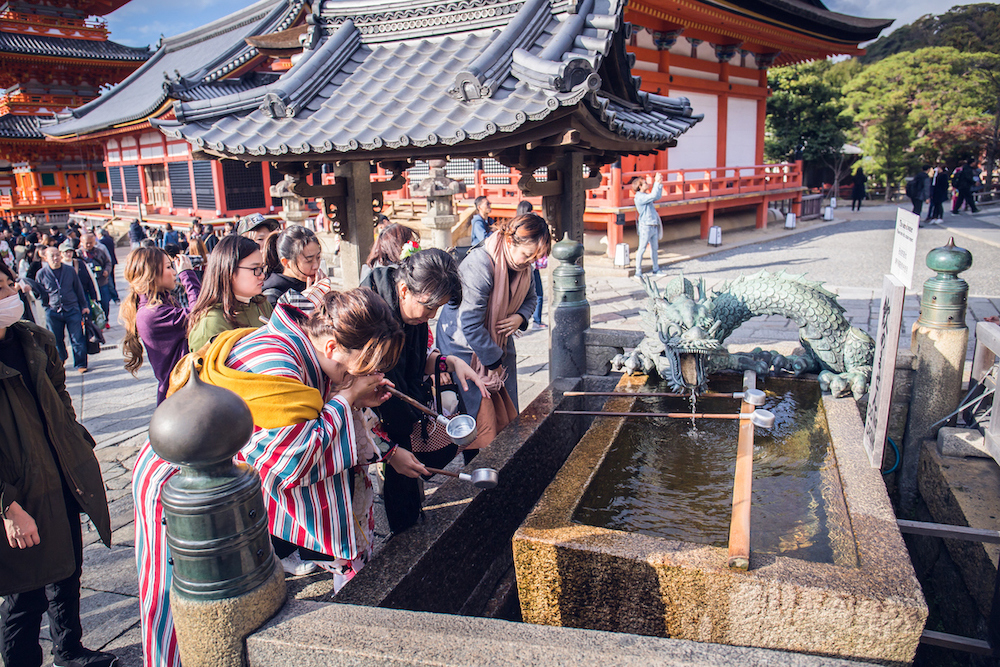 © Photo by iStock: FotoGraphik
© Photo by iStock: FotoGraphikIf there is any water still in the ladle, tip it upwards so that the water pours down the handle of the ladle, then place it back on its stand. This is a symbolic gesture of purifying the hishaku for others to use.
Most people will either shake their hands dry or dry them on a handkerchief if they have one with them. Generally speaking, you’re not meant to touch anything after purifying your hands, but if you would prefer to dry them, it’s not considered offensive to do so.
As of the start of the pandemic and continuing to the time of writing, many shrines have modified their purification rituals in order to prevent the spread of illness. Unless otherwise stated, you are only to rinse your left then right hands and that is it. Some shrines also have removed this hishaku and encourage visitors to rinse their hands with water only.
Step Three: Visiting the Honden
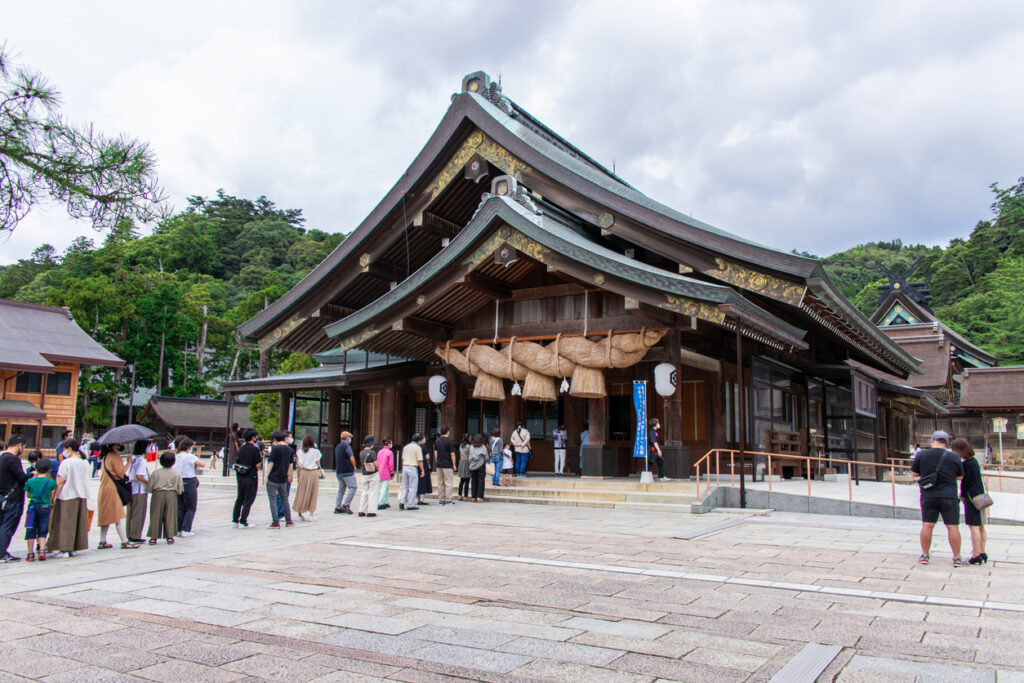 © Photo by iStock: Koshiro Kiyota
© Photo by iStock: Koshiro KiyotaThe main structure of the shrine is known as the honden (本殿), and is where the deity or deities of the shrine reside. The interior of the honden is sacred and not accessible to the public except for during special rituals (exorcisms, for example).
This is where things get more complicated. Depending on the size and style of the shrine, how you pray may vary.
The bell
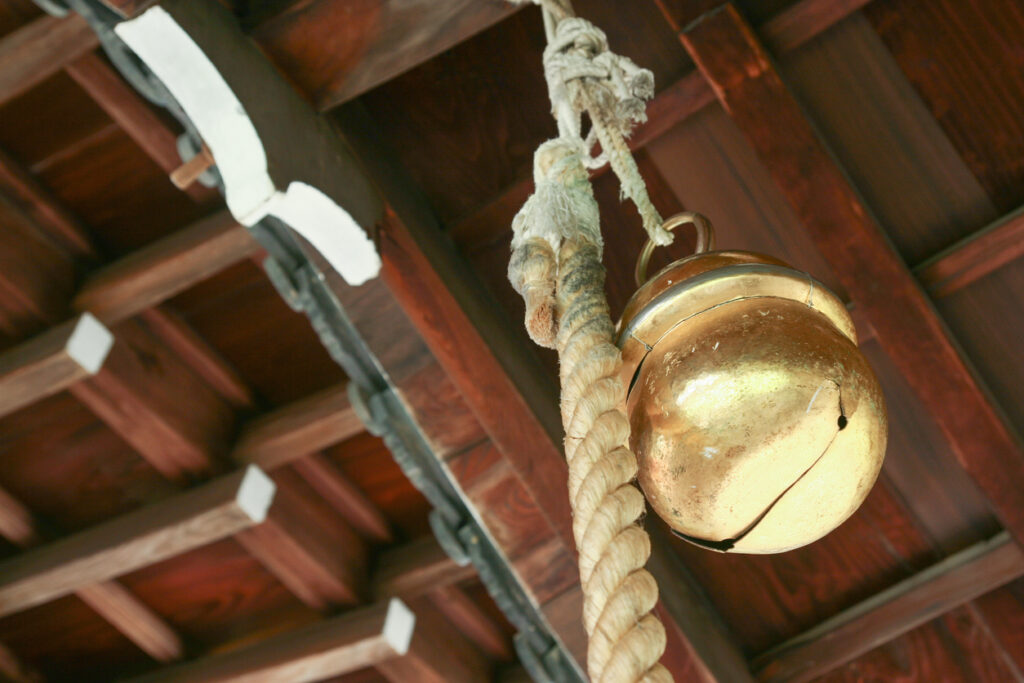 © Photo by iStock: victorn
© Photo by iStock: victornSome shrines have a large bell (鈴 suzu) with a thick rope hanging from the roof of the honden. If so, then take hold of the thick rope and shake it. The bell will ring, most likely very loudly. Repeat the process a second time. This is basically done to announce your presence to the deities of the shrine. “Think of it like ringing the doorbell” according to a former miko-san (shrine maiden).
Offering box
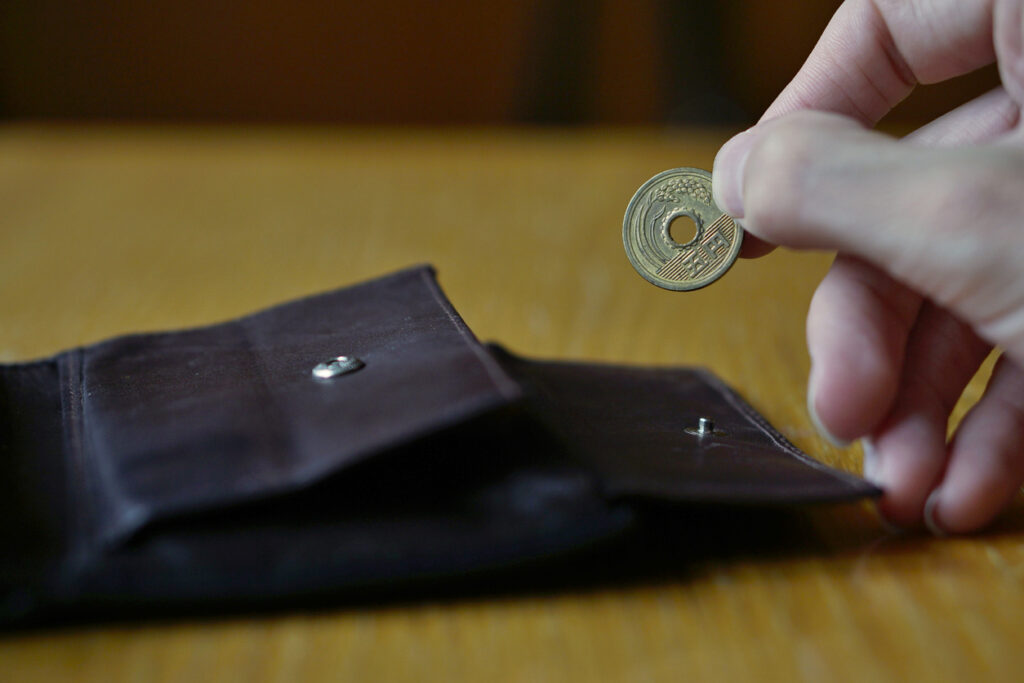 © Photo by iStock: MartinPrague
© Photo by iStock: MartinPragueOut front of the honden you’ll see a wooden, stone or metal box with a slatted opening on top. This is the saisen bakko (賽銭箱) where monetary offerings are made. You can donate as much or as little as you like. If you’d like to wish for good fortune though, you may want to offer a five yen coin. Five yen in Japanese is pronounced as “go-en” which, when written with other characters, means “good luck” or “good connections.”
Bowing and praying
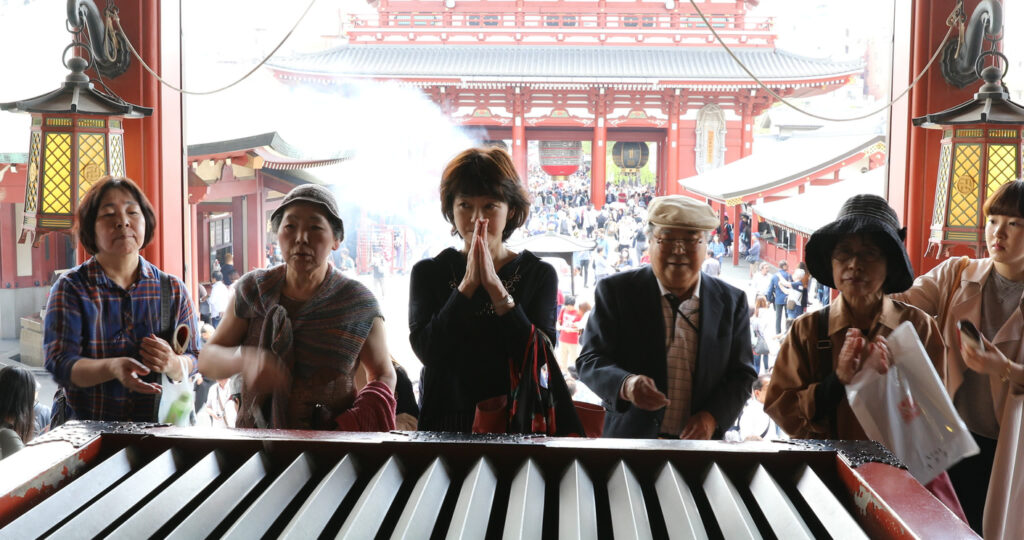 © Photo by iStock: bennymarty
© Photo by iStock: bennymartyAfter ringing the bell and making your offering, bow twice towards the honden. Clap your hands twice, then clasp your hands in prayer. Press your palms together while keeping your fingers straight to form proper gassho (合掌) position. After finishing your prayer or reflecting on your visit, bow once more.
The process of bowing, clapping and praying at a shrine is known as “nirei, nihakushu, ichirei” in Japanese. It means “two bows, two claps, one bow” and is a helpful way to keep track of the steps when visiting a shrine.
Step Four: Look Around the Grounds
 © Photo by iStock: Luthfi Syahwal
© Photo by iStock: Luthfi SyahwalOnce you’ve paid your respects at the shrine, you can walk around, look at the gardens or visit the shrine store to purchase omamori or goshuin as mentioned earlier. A few of the major shrines may even have tea houses, cafes or gift shops within their complexes, so you can sit down and rest as well.
Step Five: One Last Bow
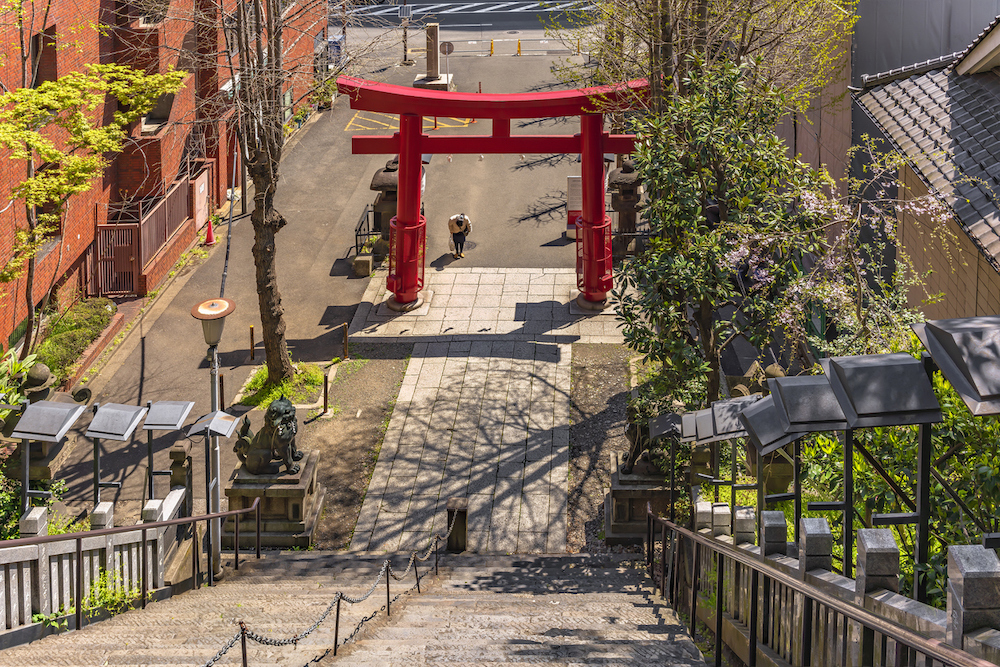 © Photo by iStock: kuremo
© Photo by iStock: kuremoAfter you have finished viewing the shrine and its grounds and are ready to head elsewhere, simply walk down the same path you took into the shrine, again staying to the left. When you reach the torii gates, walk through, then immediately turn around to face them and bow once more. This is essentially how you “say goodbye” to the shrine and its resident deities.
There are any number of reasons to visit a shrine, so making certain you know and follow the rules to the best of your abilities is key. Whether a shrine is large or small, all are welcome to come in and appreciate these sacred spaces.












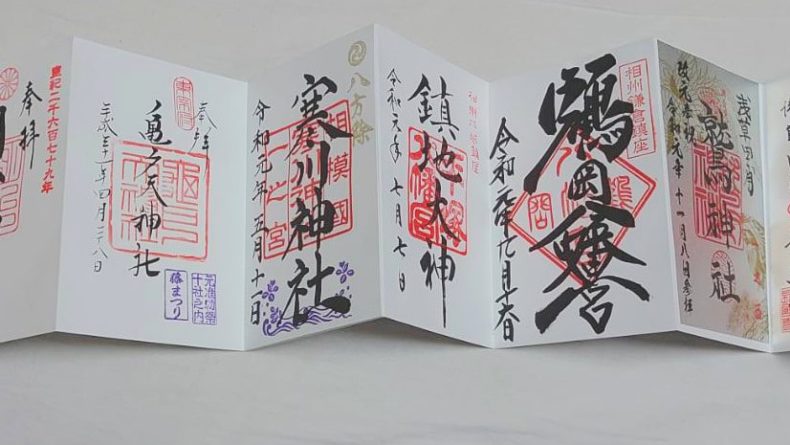
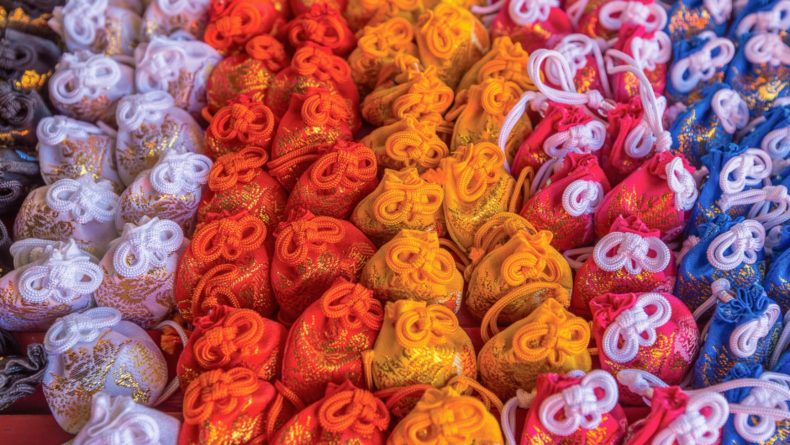
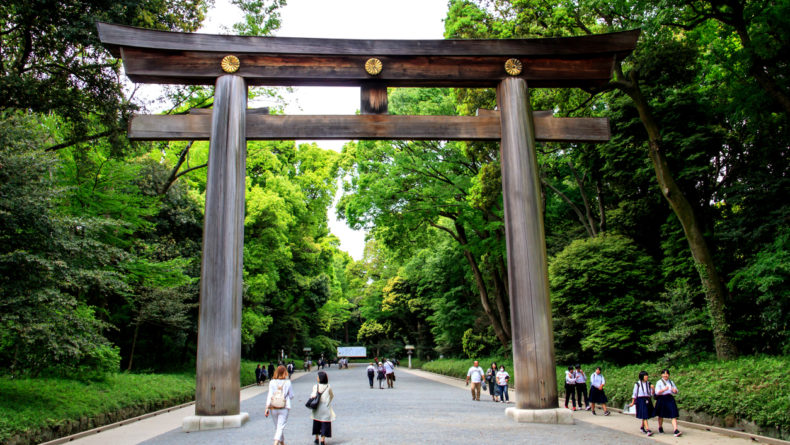
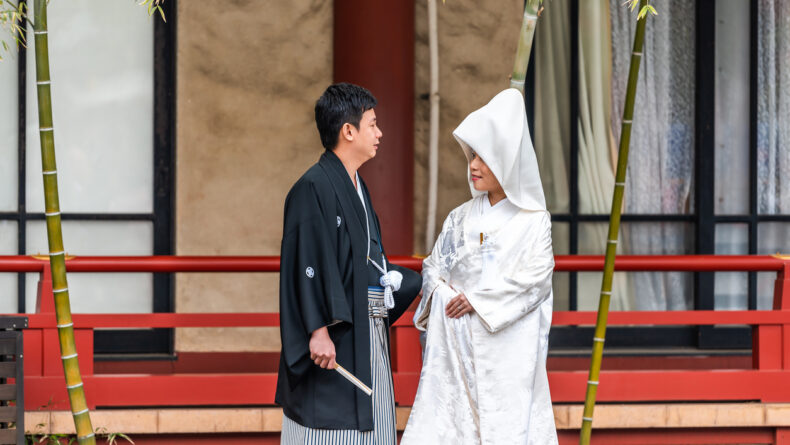
Generations of devotees and visitors have done it before. Respectful behavior sanctifies shrines and sacred spaces.